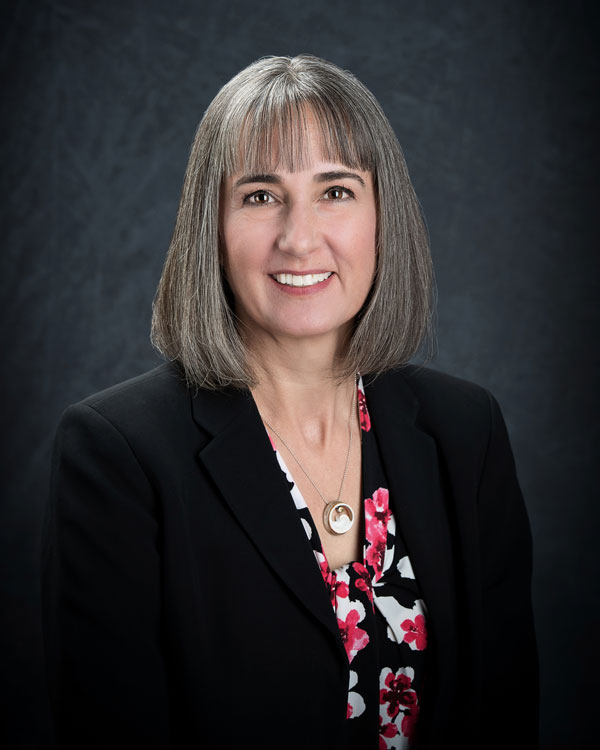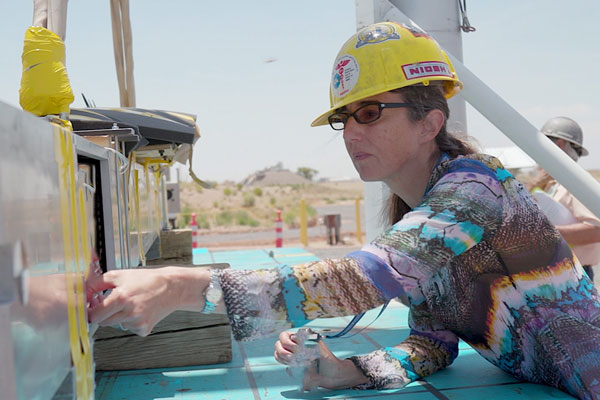
Sandia manager Sylvia Saltzstein has been recognized by DOE’s Women @ Energy: STEM Rising website, which honors women in STEM fields throughout the DOE complex.
Sylvia is the manager of spent nuclear fuel storage, transportation and security research and development at Sandia, and previously served as the acting senior manager for nuclear energy safety and security. She has been at Sandia for 26 years, and has spent the past seven years helping set and implement the national research agenda for the safe and secure storage and transportation of spent nuclear fuel and safeguards for potential reprocessing of used nuclear fuel.
In her role as an expert on nuclear energy transportation safety research, Sylvia has shared her expertise with critical stakeholders all over the world, including DOE, the U.S. Nuclear Regulatory Commission, the U.S. Electric Power Research Institute, the United Nations International Atomic Energy Agency, the German Federation of Materials Science, the Korean Atomic Energy Research Institute and the Korean Radioactive Waste Association.
She led two DOE teams that earned consecutive Secretary of Energy Achievement Awards in 2017 and 2018, and was recently honored with an Albuquerque Business First Women of Influence award for her leadership in Sandia’s nuclear energy groups and the Albuquerque community.
Sylvia was interviewed recently for her feature spot on the DOE Women @ Energy website.
What inspired you to work in STEM?
After undergraduate school, I worked at Lawrence Berkeley National Laboratory on the superconducting supercollider, and then was a graduate intern at Lawrence Livermore National Laboratory. This was a wonderful introduction into the national laboratories.
Prior to my work at Sandia, I was an Earth science and biology middle and high school teacher. I still have a passion for middle and high school science education and communication, even in my work at Sandia. I view my role as communicating the big picture and connecting people of different backgrounds to create high-performing teams.

What excites you about your work at the Energy Department?
Nuclear energy safety and security is a difficult topic. There’s a huge amount of emotion around it, even in professional conversations. It is not a topic many people in the world think about, but I think about it every day and help influence the research path and engineering solutions the United States and other countries put in place to develop permanent solutions for the disposition of radioactive and toxic material and to help provide tools that do their part to ensure that our nuclear energy and fuel is always managed in a safe manner.
Because America has the largest inventory of spent nuclear fuel in the world, understanding our risk in this area is important for the nation, as well as all the other countries who have nuclear power.
How can our country engage more women, girls and other underrepresented groups in STEM?
I think the value of outreach programs in elementary and middle school cannot be overlooked. Any engagement these girls receive in kindergarten through 12th grade can give them access to interactive displays on engineering, research and aspects of science, and it ultimately gets girls thinking, “I can do this as a career. I can go to college for this.”
I have worked with the Future Cities program and CroSSlinks, as well as programs with the University of New Mexico. It’s so important to provide girls and boys the knowledge that engineering is a career and show them that you can go to school for this. Those of us in the STEM community take for granted that kids know what an engineer is — most kids think an engineer drives a train.
I think once women get to the workforce, they need female role models in prominent leadership positions and visibility of women and minorities in science and engineering fields. When women and minorities come to Sandia, we have many resources for them to find a group and become involved. We have the Sandia Women’s Action Network and Society of Women Engineers — these outlets and daily news engagements and meetings help connect people.
The networks that women have, starting in high school and college, have been shown to be more important to them than the “good old boys” network for men. Women typically provide each other with more support and information within these networks, including job leads from their extended network of friends and colleagues.
Do you have tips for someone looking to enter your field of work?
Read as much of the work that your colleagues have done as you possibly can. Never under- estimate the power of reading. Even if you can’t understand the detail, you may gain something from reading the concepts and body of work. This takes effort — you must do your homework, and that means reading nights and weekends — reading all the papers and articles you can get your hands on.
Second, I would say getting involved in corporate teams and groups is vital to success. It can be an intramural sport, professional organizations or any group that can build your network outside of your immediate technical area. I think women tend to be outstanding at organizing people and developing teams. We should learn to capitalize on this and not be afraid to be the person who organizes — whether it be a club, sport or a technical team. There is a lot of power in establishing diverse teams, as opposed to just focusing on technical knowledge.
Finally, don’t burn bridges. Technical communities can be small. You will work with everyone again sometime in the future, so keeping positive relationships is vital to success.
What are some of your hobbies?
Well, it’s certainly not a hobby, but raising my three wonderful daughters is what I love, and it’s what I choose to do in my free time. I also enjoy running, biking, hiking, skiing, gardening and cooking. Oh, and I love to travel!